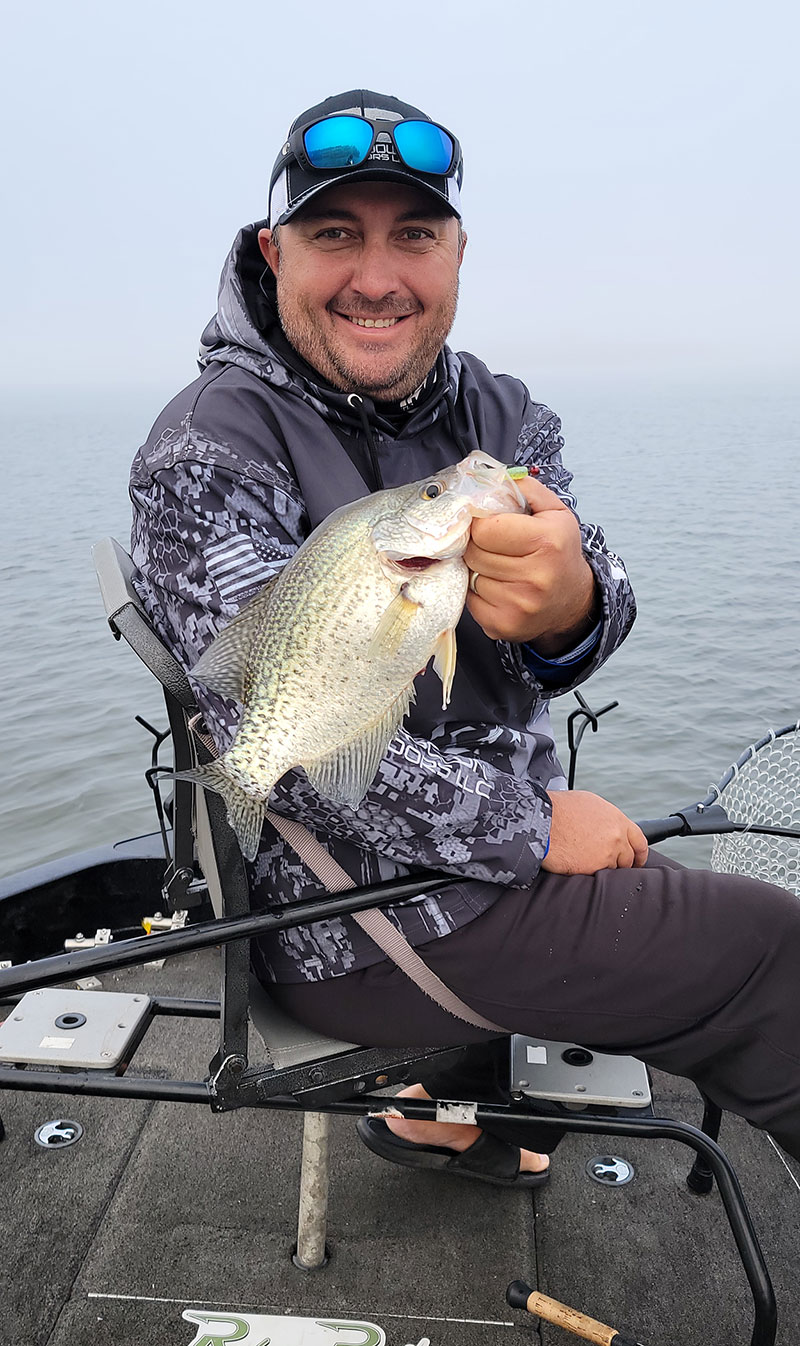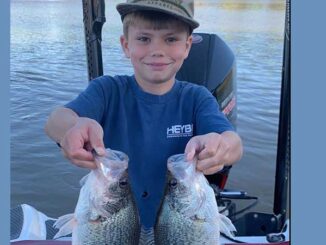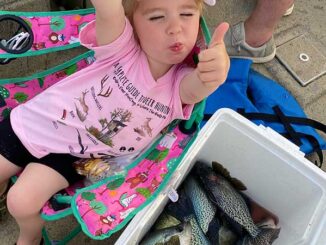
High Rock Lake is slab city
Precision is the name of the game this month at High Rock Lake for Capt. Shane Walser of Yadkin Lakes Crappie Guides (336-978-3737).
“With today’s electronics, it’s not uncommon for anglers to use only one rod when targeting crappie this time of year. Just a few years ago, every crappie boat you’d see here would be long-lining or spider rigging with multiple rods,” he said.
Long-lining or spider rigging employs numerous rods placed in rod holders all around the boat while the angler slowly trolls through areas likely to hold crappie. It’s an effective method, but it’s more of a game of chance.
Anglers can spend a lot of time trolling through areas where no fish are present, then “hit paydirt” when their jigs reach areas with big congregations of fish.
“It’s still an effective method. But with LiveScope, you can eliminate a lot of that riding around in unproductive areas,” said Walser.
Instead, he watches his electronics screen, which displays the schools (or lack of) crappie in real time. And when he finds what he’s looking for, he uses a single rod to drop a jig or jig/minnow combo to the fish.
Walser said finding the fish is still only half the battle though. If they aren’t in a feeding mood, anglers can stare at a screen full of fish, with nothing to show for it. But, for anglers using the right approach, seeing that can be just as big of a help as actually catching them. Almost, at least.
“LiveScope is truly a game changing piece of technology. Finding the fish is a big part of it. But also, being able to see how the fish are reacting to your lure is another part of it. And that’s true even if they aren’t biting,” he said.
Some days, the fish will strike aggressively. Other days, they’ll show a little interest, but will take a little longer to commit to biting. And on some days, they pay little attention to your lure at all.
“When they aren’t interested, you’ll see it really quickly. And then you can just move on to finding another school, and maybe that other school is in a feeding mood,” he said.
Another thing he’ll sometimes notice is that crappie will be in a big cluster, but below or off to the side of that cluster is either a smaller cluster of fish, a few fish, or a single fish.
“When you see those fish that are very close, but separated from the biggest cluster, you can target those fish by guiding your lure or bait specifiically to those fish. And even when the main school of fish isn’t feeding, those that are separated often are,” he said.
And a bonus, said Walser, is that sometimes those isolated fish are the bigger slabs.
When Walser finds the fish, he targets them with small jigs tied onto 4-pound or 6-pound Slime Line, and uses a Precision Crappie Rod from Catch The Fever.
“These rods come in various lengths, and are built specifically to target crappie while using today’s electronics,” he said.





Be the first to comment